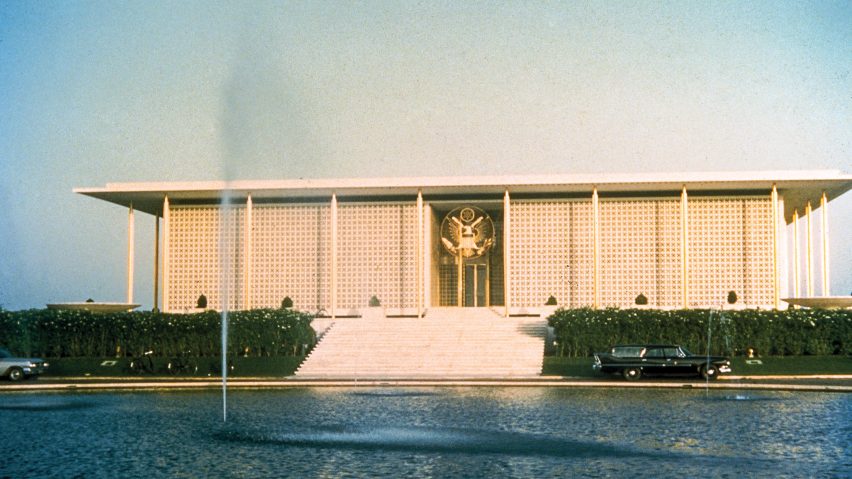
Ten Cold War US embassies that embody America's 20th-century "victorious exuberance"
Embassies designed for the United States by Walter Gropius and Eero Saarinen feature in this roundup based on David B Peterson's book US Embassies of the Cold War: The Architecture of Democracy, Diplomacy and Defense.
"These mid-century modern embassies were built as a billboard for democracy," Peterson told Dezeen. "By the end of world war two, neoclassicism had come to be widely associated with fascism."
"By designing the United States' first purpose-built embassies in an explicitly modern language, and by building them on such a wide scale in the victorious exuberance of the post-war American moment, the State Department was seeking to differentiate American culture from fascism and communism."
Peterson, who studied the topic at Columbia University and whose father worked as a cabinet secretary for Richard Nixon, wanted the book to highlight how architecture set the stage for the global role that the US would play during the later part of the 20th century.
He contends that the "open" use of modernist designs, which relied heavily on glass, mirrored the democratic posture that the US was attempting to cultivate abroad.
The inclusion of architects who were persecuted by fascist regimes, such as Walter Gropius, added to this dynamic.
"Everything has changed"
However, Peterson also wanted the book to demonstrate how, with global unrest and war looming, the design of contemporary embassies contrasts with this mid-century mood.
Because of security concerns, embassies have shifted away from prominent urban areas, becoming more defensive and "fortress-like".
"Everything has changed, and not for the better, at least for fans of architecture and design," Peterson said.
"Due to security concerns after two terrorist attacks on US embassies in Kenya and Tanzania in 1998 and the World Trade Center attacks in 2001, many of the US embassies of the Cold War have been decommissioned and sold because protective security is challenging in the dense, urban environments were most were built."
Peterson referenced the Kieran Timberlake-designed US Embassy in London's Nine Elms as indicative of this trend.
"I would call the recent embassy architecture 'the identity crisis of the American Embassy'," he said.
Read on for Peterson's 10 picks from US Embassies of the Cold War.
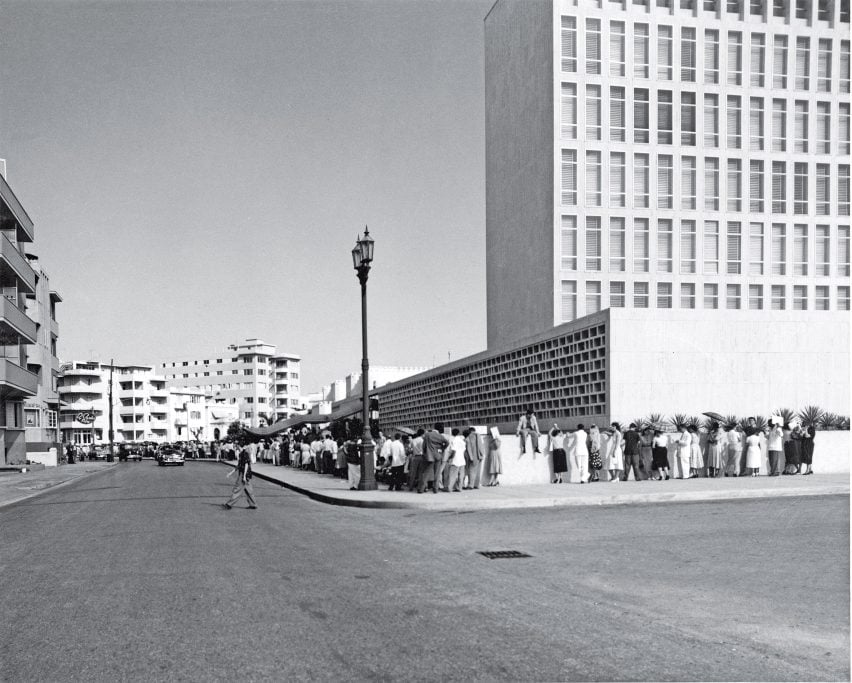
Havana, Cuba, by Harrison & Abramovitz (1953)
This compact, symmetrical embassy was designed in the Cuban capital before the country's socialist revolution by Wallace Harrison and Max Abramovitz, the designers of the UN headquarters in New York and the CIA headquarters in Virginia.
"It embodies the highs and lows of American foreign policy during this era: on the one hand, it was designed as a symbol of optimism and international cooperation and on the other hand, it was hastily evacuated in January of 1961, not long after Castro's revolution forced Batista to flee the country, just weeks before JFK's inaugural address," said Peterson.
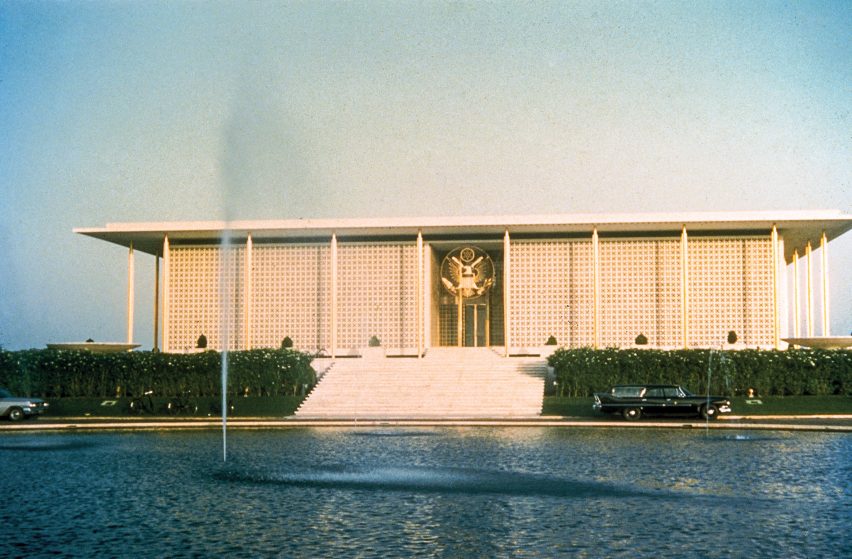
New Delhi, India, by Edward Durell Stone (1959)
Edward Durell Stone's New Delhi embassy features a cantilevered roof with small pillars and is set in front of a large water feature. It was praised by American architect Frank Lloyd Wright as "the only embassy to do credit to the United States," according to Peterson.
"Edward Durell Stone's embassy in New Delhi stands out because it was universally praised as a modern masterpiece. It is also one of the few Cold War embassies on the US Secretary of State's Register of Culturally Significant Property," said Peterson.
"It still serves as a US embassy and just underwent a significant renovation to ensure its ongoing functionality."
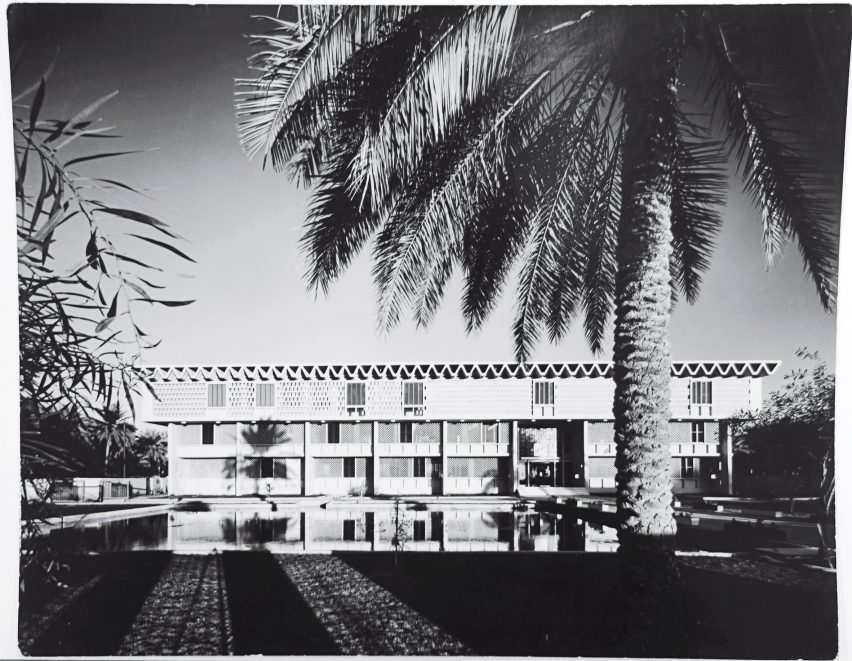
Baghdad, Iraq, by Josep Lluis Sert (1955)
Modelled on the architecture of Middle Eastern antiquity, Spanish architect Joseph Lluis Sert's now-vacant embassy building exemplified the government's emphasis on "openness and accessibility", according to Peterson.
"It is like a Babylonian hanging garden sprawling along the bank of the Tigris River, with diplomatic buildings widely spread out and the surrounding urban context porously connected," said Peterson.
"Sert's design perfectly captures the optimism of the State Department during this era, and its general lack of concern over terrorism and other security threats."
Since 2007, the US has operated a 104-acre complex as its embassy in the country.
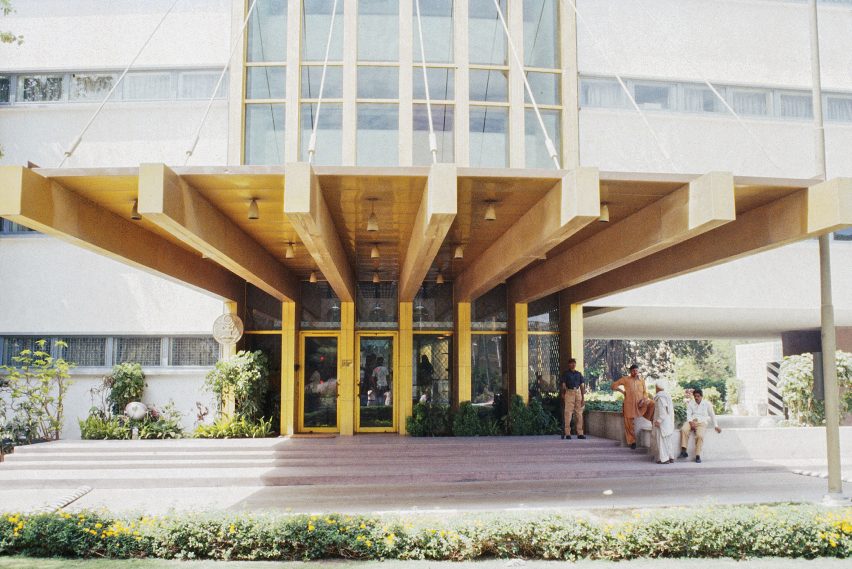
Karachi, Pakistan, by Neutra & Alexander (1959)
American architect Robert E Alexander and Austrian-American Richard Neutra designed an embassy that featured a stark design interspersed by gold-painted louvres. It was quickly abandoned as Pakistan moved its capital from Karachi to Islamabad.
"Neutra & Alexander's Karachi embassy is significant because it was a failure," said Peterson.
"The architectural press hated it. Conservatives in Congress hated it. Less than a year after opening, the capital of Pakistan was moved from Karachi to Islamabad, rendering the building functionally useless."
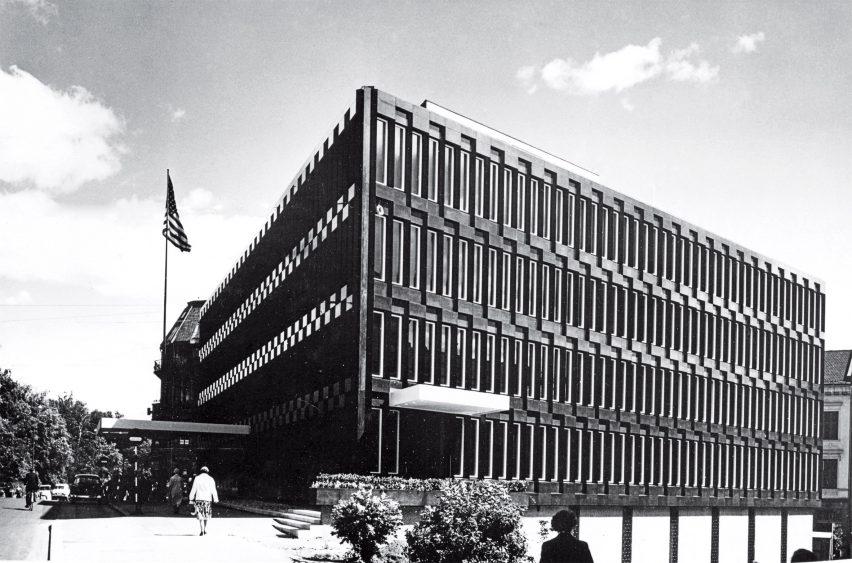
Oslo, Norway, by Eero Saarinen (1959)
Eero Saarinen's design for Oslo featured a triangular layout and a facade covered with windows, some recessed and some not.
"Eero Saarinen's embassy in Oslo is among the most daring designs approved by the State Department," said Peterson.
"It is an interesting example of a modern building where form firmly dominates function. It was recently decommissioned and is now a national landmark."
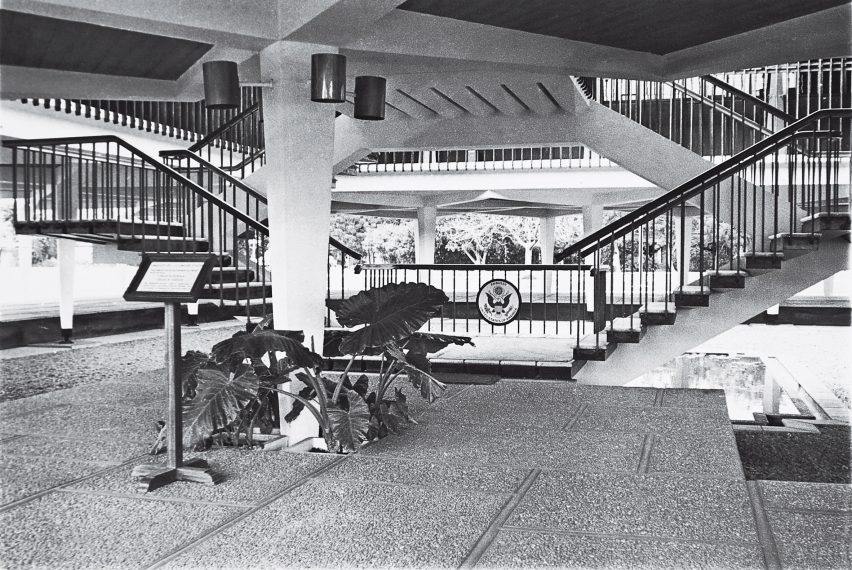
Accra, Ghana, by Harry Weese (1957)
Harry Weese's design for the Ghana embassy featured a single-storey structure suspended off the ground with central staircases and local influences, in response to criticism that the international style being over-used.
"Widespread criticism resulted in attempts like Harry Weese's to incorporate local traditions and materials," said Peterson.
"Conceived as an inverted Wa-Naa palace, and extensively finished in local mahogany, the Accra embassy exemplifies this push towards contextuality."
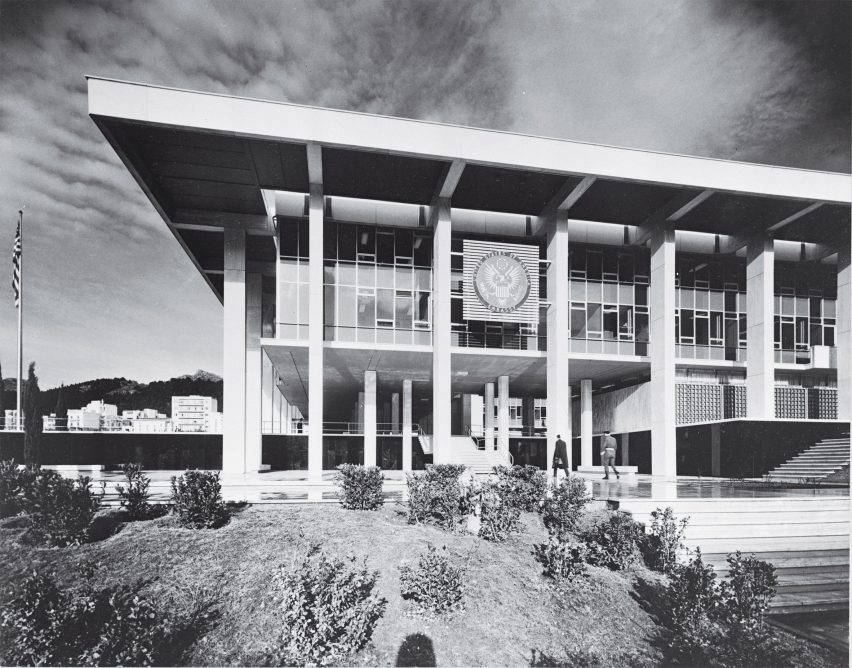
Athens, Greece, by Walter Gropius (1961)
After fleeing Nazi Germany, Gropius, founder of the Bauhaus design school, designed a structure with a massive, cantilevered roof and some sections suspended by pilotis. It is still in use today and is under renovation.
"His design for the Athens embassy is one of the masterpieces produced by the State Department's program," said Peterson.
"As such, Athens is where we see one of the best examples of the amazing talent that poured out of Europe into the United States during this era."
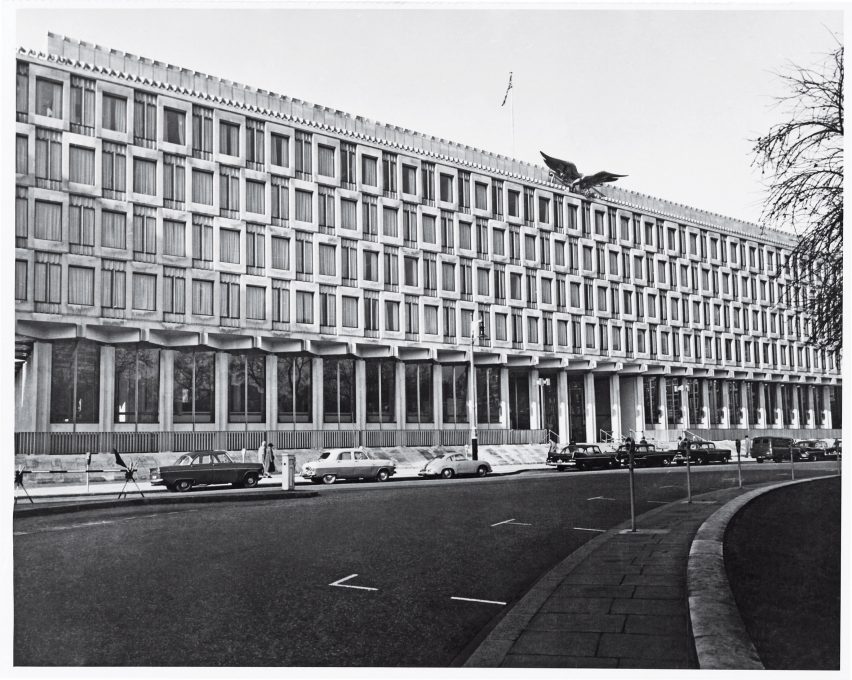
London, England, by Eero Saarinen (1960)
Saarinen's London design featured a long building with floor-to-ceiling glass at its base and was heavily criticised by Londoners at the time, according to Peterson, who noted that it was "one of the most controversial" of the embassies.
"Tragically, in recent years it has been decommissioned, gutted and altered virtually beyond recognition except for parts of the facade," said Peterson.
"It is soon to be restaurants and a hotel, highlighting the vulnerability of these historic buildings and the need to preserve them, when possible."
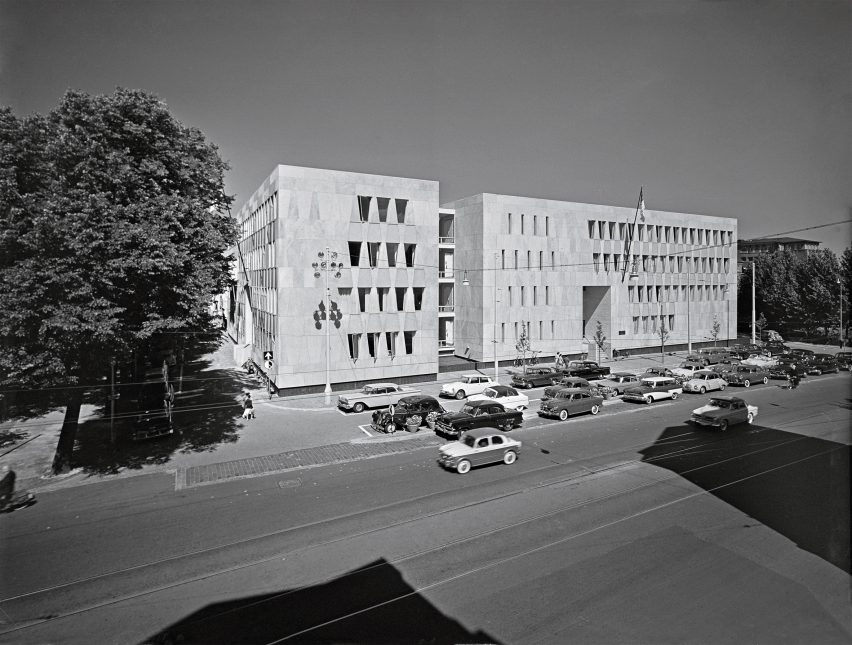
The Hague, Netherlands, by Marcel Breuer (1959)
This brutalist work by Marcel Breuer was built in a historic part of the city that was partially destroyed by bombs during world war two and is now a contemporary art museum.
"In Europe, the modern embassies were often built in dense, historic city centers on land only made available as a result of aerial bombardment during world war two," said Peterson.
"Marcel Breuer's embassy in The Hague is one of the prime examples of this kind of architectural juxtaposition."
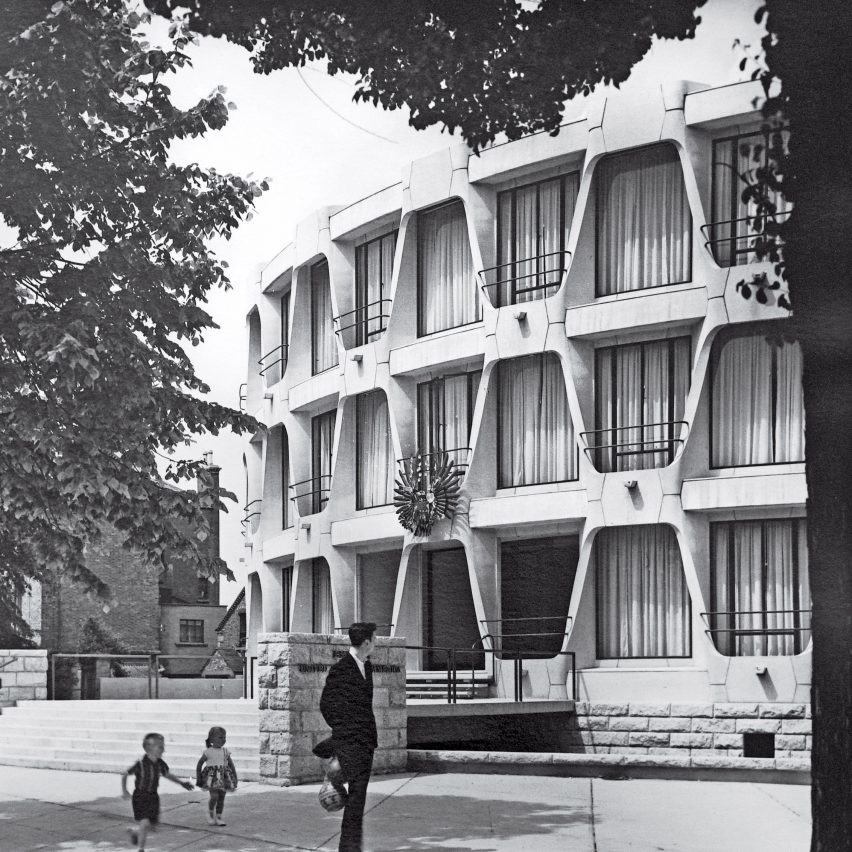
Dublin, Ireland, by John Johansen (1964)
John Johansen's design for the Irish capital featured a curved structure with a precast concrete facade based on Celtic fortresses and still functions as an embassy today.
"John Johansen’s embassy in Dublin was the last one completed under the modern embassy program, and it is one of the finest," Peterson said.
"The success of the Dublin embassy stands as a symbol of the poignant irony that the modern embassy program was curtailed just when it seemed to be hitting its stride."
The photography is courtesy of the Onera Foundation.